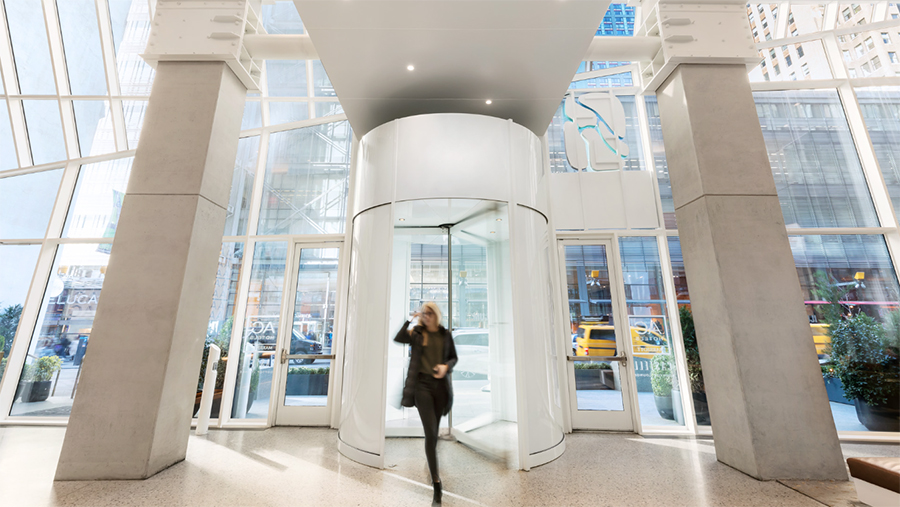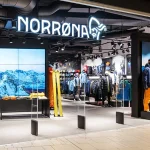AlixPartners 2024 Holiday Survey found that two-thirds of respondents will leave an online or brick-and-mortar store and shop elsewhere if an item is out-of-stock.
“‘Right product, right place, right time’ echoes in every retail conference room. Yet as retailers have expanded their online assortments and marketplaces to attract new customers and traffic, it’s become more challenging to avoid frustrating shoppers when they can’t find their size or their desired item in-store.”
Across retailers, AlixPartners found that, on average, in-store assortments are only about 9 percent as large as online assortments. Among different channels, mass only offered 2 percent of its online assortment in-store; department stores, 7 percent; jewelry, 12 percent; active, 16 percent; footwear, 19 percent; and specialty, 32 percent.
As an example of the challenges, AlixPartners reported that Macys.com sells 24,000 women’s tops online, but for customers shopping in-store at its flagship location in Herald Square in New York City, just 2,500 women’s tops are available on the retail floor.
At the Gap, 158 tops and tees are available for women online, but only 50 are available at its largest Herald Square retail location.
AlixPartners wrote, “While retailers cannot afford to take on the inventory cost and risk of carrying this breadth of product in-store, the bar is high to appear seamless. To do so, retailers must improve their ability to integrate advanced analytics and logistics to boost their efforts to both forecast and move products more effectively … and stop disappointing customers.”
The study found that 82 percent of respondents expect to see the same product across channels. When asked what they do when they find a product is not in stock in-store, 36 percent said that they order it online from the retailer, 34 percent order it online from a different retailer and 31 percent try to find it in-store from a different retailer.
While important across all sectors, finding an online product in-store is most important in higher-priced categories, where over 80 percent of respondents in the survey see this as an “Important Purchase Driver.”
In-stock products were also important to around 85 percent of respondents in the luxury, jewelry and watches, and outdoor and active categories. Conversely, this is least important in off-price, where only 42 percent of respondents cited it as a “Primary Purchase Driver.”
Looking at generations, finding available products in-store was “Most Important” to Millennials and Gen X, of which 55 percent and 56 percent, respectively, cited it as a primary purchase driver.
Another consumer frustration identified in the study and tied to conflicts between online and in-store purchasing behavior is inconsistent pricing, with nearly 85 percent of respondents wanting consistent pricing across all channels.
“Across all income brackets, transparent pricing ranks as the top purchase driver, wrote AlixPartners in the study. “But retailers have been using price and discounts as a lever to help them hit their forecasts, offering single-channel deals and changing online prices weekly to maximize margins.
Customers are savvy to this; they compare online prices for items they hold while waiting in line at the cash register and request price matches from associates, or buy items that will be discounted in the weeks ahead and later recoup the difference. Despite their ability to exploit price discrepancies, they prefer to see consistent pricing across all channels.”
Consistent pricing is important in department stores and outdoor and active categories, where 58 percent and 61 percent of overall respondents said it is a primary purchasing driver.
Among age groups, Boomers are the most sensitive to dynamic pricing, with 90 percent of respondents citing consistent pricing across channels as a “Very Important” purchasing driver.
AlixPartners wrote that retailer efforts to make price discrepancies “special” are not working either. Only 44 percent and 45 percent of respondents cited special in-store prices and exclusive pricing events for loyalty members or frequent shoppers as key purchase drivers, respectively.
Among all categories, respondents in the jewelry and watches category placed the “Least Importance” on consistent pricing as a key purchase driver.
“Consumers may be shopping digital channels first, but they are back in stores and incredibly frustrated when pricing is inconsistent or they can’t find in-store what they saw online—they are tired of doing the work,“ said Sonia Lapinsky, partner and managing director and leader of Fashion Retail at AlixPartners, in a statement. “Retailers need to reallocate resources to what matters for consumers—nailing the seamless experience and getting the right product in the right place. It’s crucial for retailers to hit the mark this season, or consumers will take their dollars elsewhere.”
Other findings in the study include:
- Add-On Services Least Important. Respondents across all demographics ranked recycling programs, “Buy Now Pay Later“ (BNPL) offerings, social-media shopping, and non-shopping experiences as “Least Important” shopping considerations, with 40 percent saying that these services impact their decisions. Millennials see the “Most Value” in these services, while Boomers see “The Least.” Respondents in the luxury and jewelry categories value these add-ons “Significantly More” than other survey respondents.
- Retailers Rising Customers Expectations. Consistent fit/sizing (91 percent), product/price alignment (90 percent) and the best deal (90 percent) ranked as department store top purchase considerations for survey respondents, indicating that investments in price-optimization capabilities are necessary to prevent migration from department stores into off-price. Survey respondents ranked Macy’s, Kohl’s and JCPenney as the top department store retailers.
- Loyalty Programs Drive Less Loyalty Retention. While 80 percent of respondents see the importance of retailers offering rewards programs, only 32 percent said existing programs make them feel like the brand understands them, and 36 percent said the programs incentivize them to shop more often from the retailer.
















